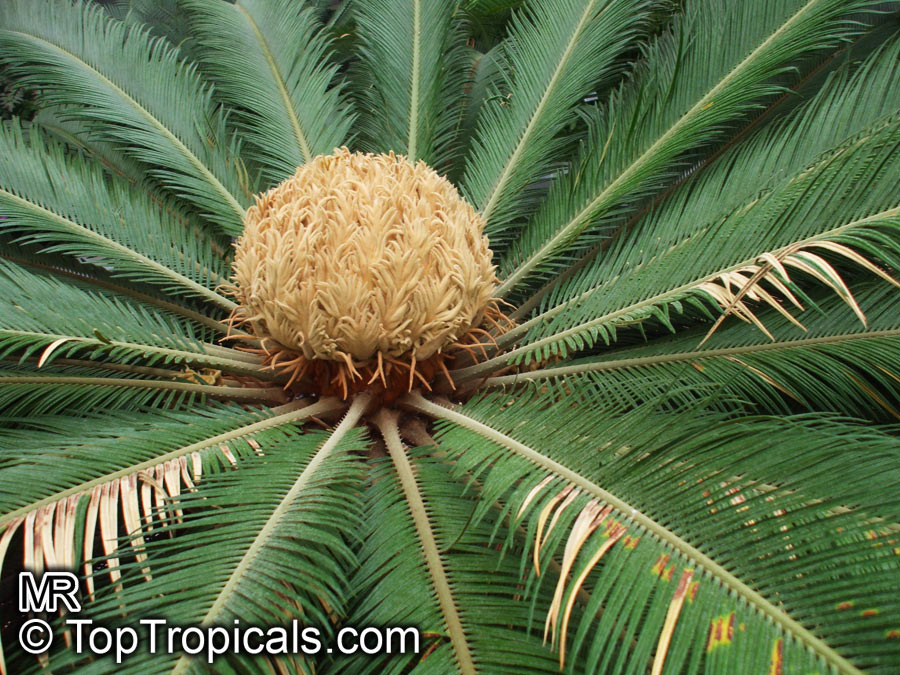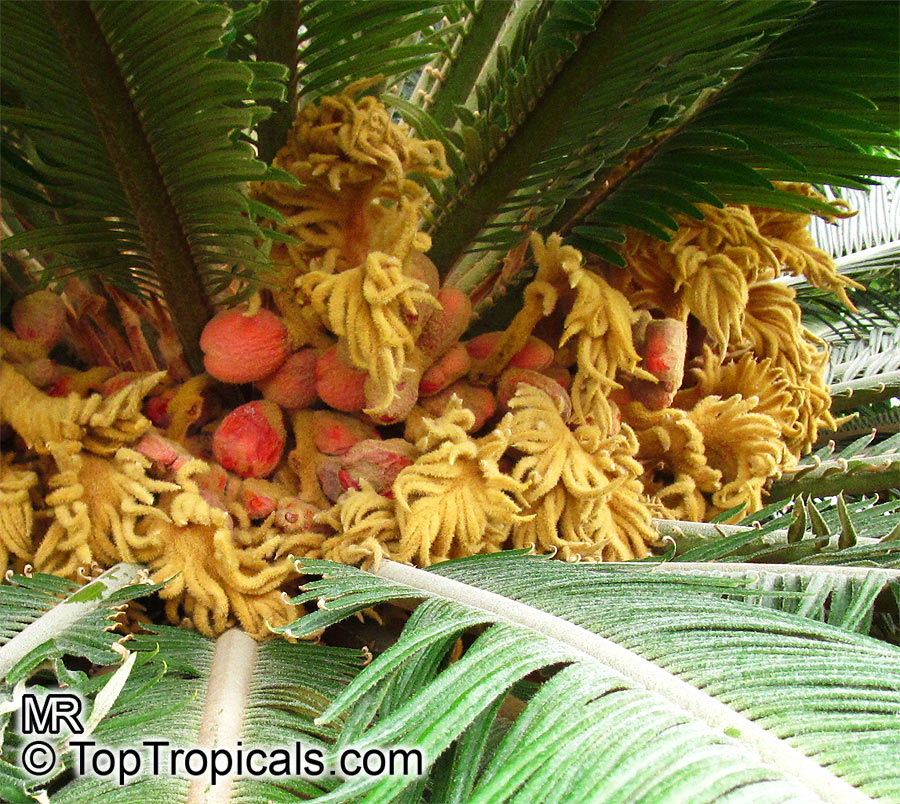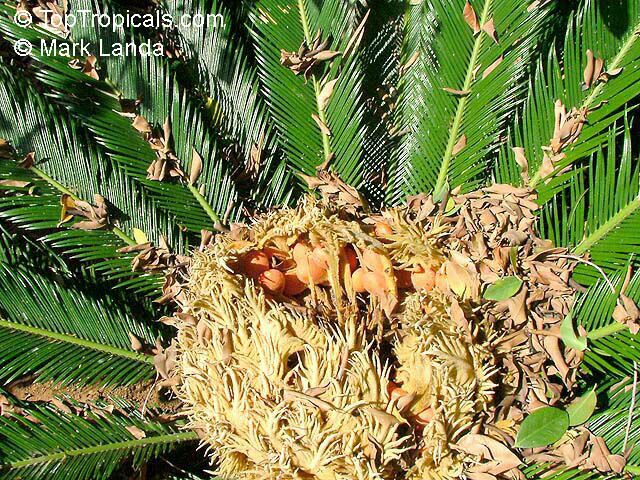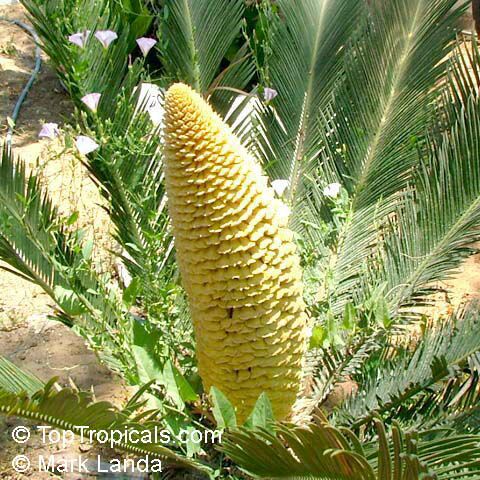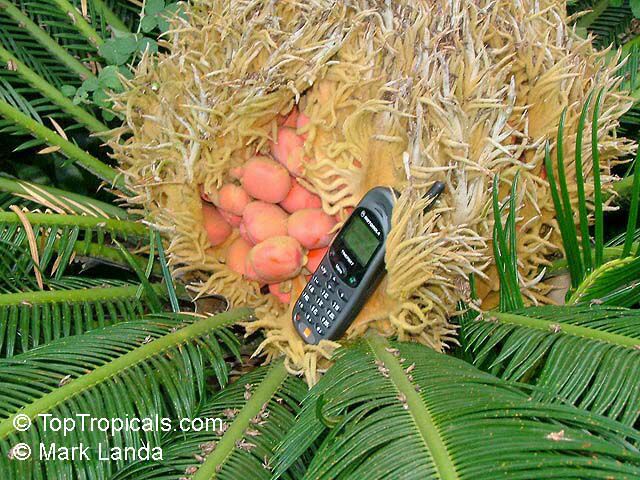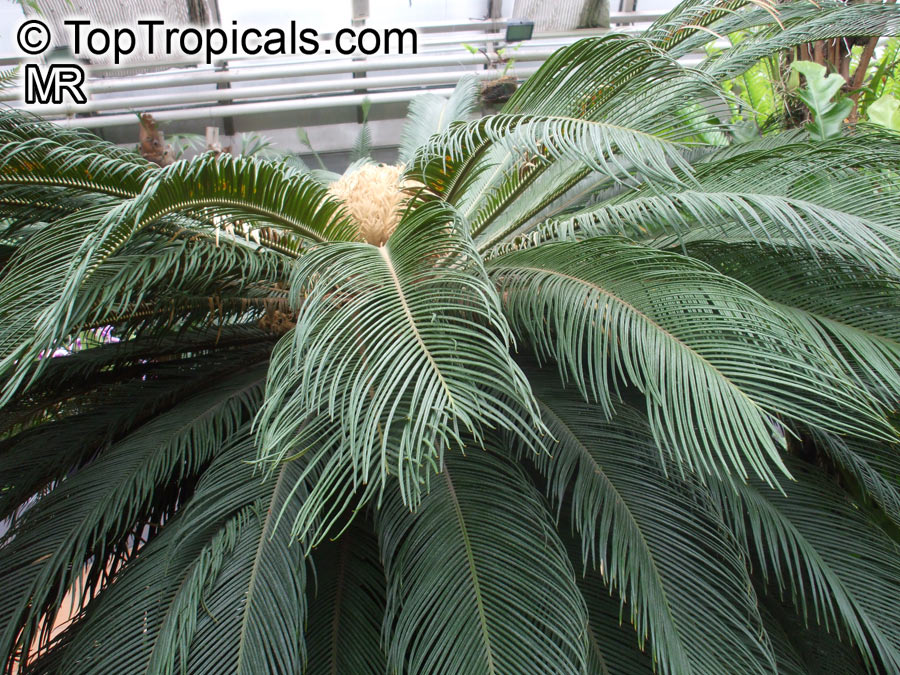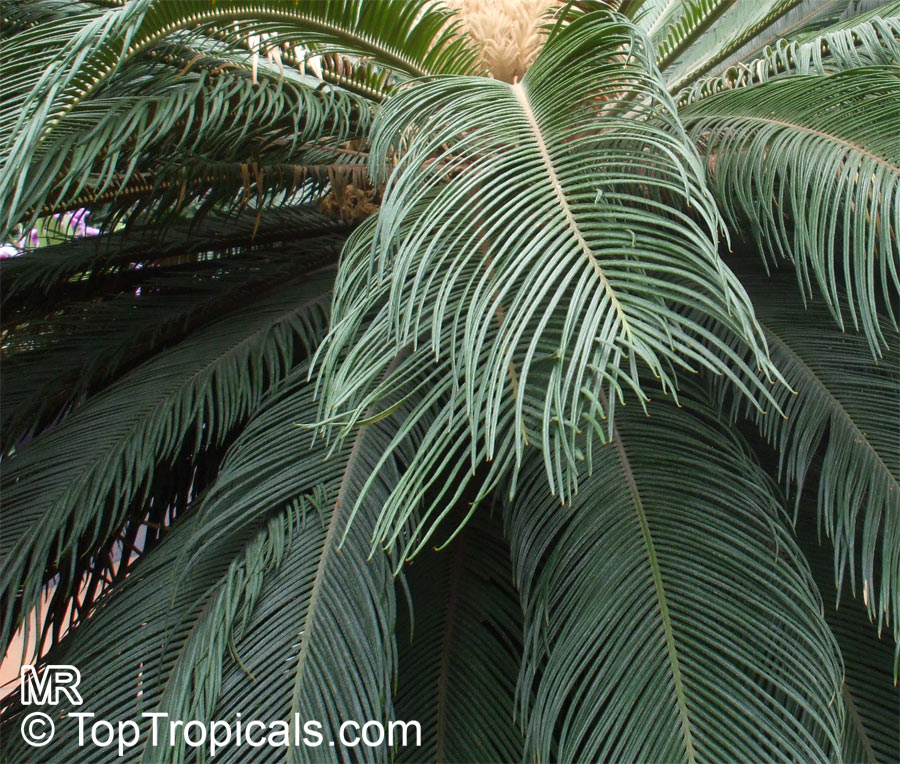Cycas revoluta (Sago Palm)
Top Tropicals Plant Encyclopedia
Botanical name: Cycas revoluta
Common names: Sago Palm, King Sago
Family: Cycadaceae
Origin: Japan, South China








Cycas revoluta, commonly known as Sago Palm, is a popular ornamental plant with an unusual appearance. It is one of the most primitive living seed plants and is related to conifer and Ginkgo trees. Cycads, in general, are often referred to as "living fossils" due to their ancient origins and their little evolution in the past 200 million years.
The growth habit of Cycas revoluta is characterized by an upright trunk and whorled, stiff feather-like leaves that grow in a circular pattern. Unlike other plants, Sagos produce periodic "flushes" of new leaves, known as a "break," rather than continuously adding foliage. Offsets also begin to grow at the base and occasionally in the crown, providing a source of new plants and the potential to develop unique specimens.
Cycas revoluta is a great choice for Mediterranean climate gardens as it requires only moderate water and full sun or semi-shade. It is also salt tolerant and does not suffer from severe wind or drought, making it an excellent choice for seaside gardens. In cooler climates, it can be grown in a pot in a sheltered location and brought indoors for the winter.
To maintain the plant appearance, dead or damaged leaves should be pruned away as needed. While it doesn't require pruning to stay attractive, a bit of judicious pruning can help maintain the desired shape and size. Regular watering is recommended, with a little extra water during periods of heat or wind. Fertilization every 2-3 months through the summer months with a slow-release or liquid fertilizer can also help achieve the best results.
Regardless of age or size, Cycas revoluta is one of the easiest plants to grow, whether indoors or out, and is a popular choice for landscapes in USDA zones 9-11.
